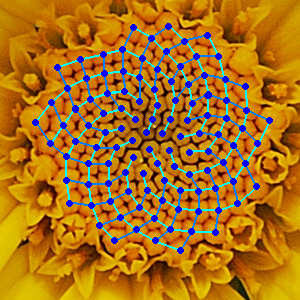The Fibonacci sequence is a mathematical pattern that has fascinated scholars, mathematicians, and enthusiasts for centuries. It is named after Leonardo of Pisa, also known as Fibonacci, an Italian mathematician who introduced the sequence to the Western world in the early 13th century.
Leonardo of Pisa was born in 1170 in the city of Pisa, Italy. He traveled extensively throughout the Mediterranean, where he learned about various mathematical systems and concepts. During his travels, Fibonacci encountered the Hindu-Arabic numeral system, which was revolutionary compared to the Roman numeral system commonly used in Europe at the time.
Fibonacci was particularly intrigued by the Hindu-Arabic numeral system’s use of zero and the concept of place value. He recognized the system’s efficiency and accuracy in performing calculations, and he was determined to introduce it to Europe.
In 1202, Fibonacci published his groundbreaking book, “Liber Abaci” (Book of Calculation), which introduced the Hindu-Arabic numeral system to Western mathematicians. The book also contained various mathematical problems and solutions, including what is now known as the Fibonacci sequence.
The Fibonacci sequence is a series of numbers in which each number is the sum of the two preceding ones. It starts with 0 and 1, and the sequence continues indefinitely. The sequence begins as follows: 0, 1, 1, 2, 3, 5, 8, 13, 21, 34, and so on.
Although Fibonacci did not discover the sequence himself, he encountered it while studying an ancient problem involving the breeding of rabbits. The problem asked how many pairs of rabbits would be produced in a year, assuming that each pair produces a new pair every month and that each pair becomes productive after one month.
Fibonacci realized that the number of pairs of rabbits in each month followed a specific pattern, which is now known as the Fibonacci sequence. He used this example in “Liber Abaci” to illustrate the sequence’s applications in nature and mathematics.
While Fibonacci’s work initially received mixed reactions, his book eventually gained recognition and popularity. Mathematicians and scholars across Europe began studying and applying the Fibonacci sequence in various fields, including number theory, geometry, and even art and design.
The Fibonacci sequence has since become a fundamental concept in mathematics and has found numerous applications in various disciplines. It appears in nature in the form of spirals found in seashells, sunflowers, and pinecones, as well as in the growth patterns of plants and the branching of trees.
Furthermore, the sequence has been utilized in computer algorithms, financial analysis, and even in predicting stock market trends. Its inherent mathematical properties have made it a valuable tool for understanding patterns and relationships in different domains.
In conclusion, the Fibonacci sequence was introduced to the Western world by Leonardo of Pisa, also known as Fibonacci, in his book “Liber Abaci” published in 1202. Although the sequence itself existed before Fibonacci’s time, he played a crucial role in popularizing and demonstrating its applications in mathematics and nature. Today, the Fibonacci sequence continues to captivate mathematicians, scientists, and enthusiasts as a timeless pattern that reveals the beauty and intricacy of the mathematical world.


